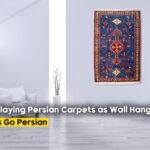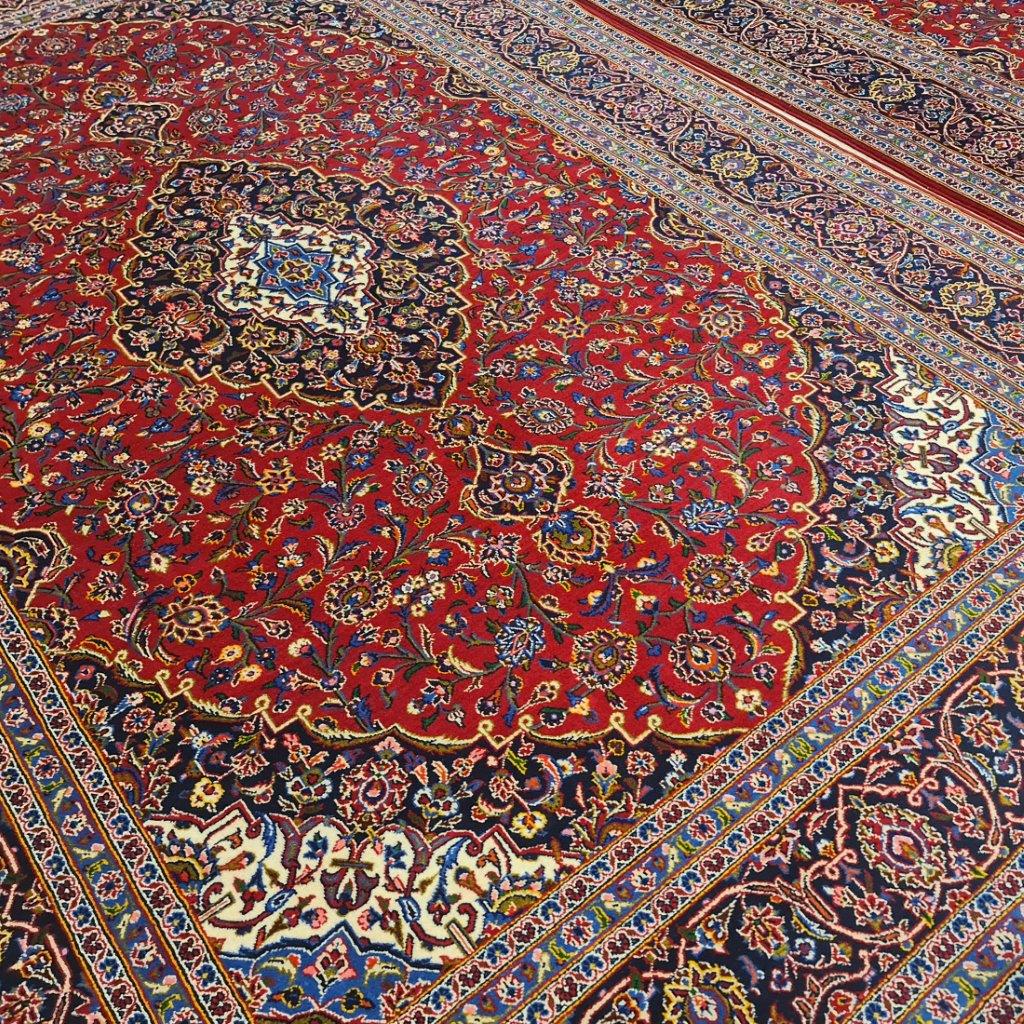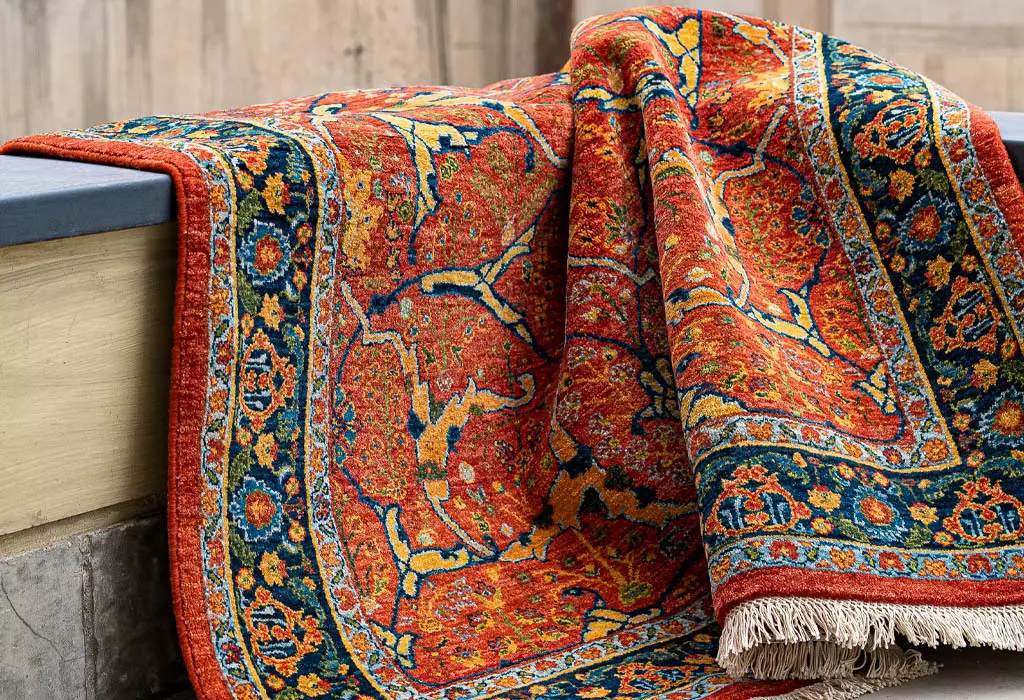
The Art of Displaying Persian Carpets as Wall Hangings

Iran’s Carpet Markets
Persian carpets have captivated collectors for centuries, cherished not only as stunning decor but also as symbols of craftsmanship, history, and cultural legacy. Starting a Persian carpet collection can be a rewarding journey, but for beginners, it can feel overwhelming due to the range of styles, sizes, materials, and origins. This guide will help you understand the essential factors to consider when building your Persian carpet collection, offering insights into choosing authentic pieces, understanding quality, and maintaining your investment.

A Beginner’s Guide to Starting a Persian Carpet Collection
1. Why Collect Persian Carpets?
Before diving in, it’s helpful to know why Persian carpets are such prized collectibles. Here’s what makes them special:
- Artistry and Craftsmanship: Persian carpets are hand-woven using techniques passed down through generations, featuring intricate designs that take months or even years to complete. Each carpet is a unique work of art.
- Cultural and Historical Value: Persian carpets reflect the rich history and cultural diversity of Iran, with designs inspired by myths, nature, and regional traditions.
- Investment Potential: High-quality Persian carpets can increase in value over time, especially antique pieces or those from renowned weaving centers. Collecting them can be a long-term investment.
2. Understanding the Types of Persian Carpets
Persian carpets vary greatly depending on the region they’re from, and each area has a distinctive style. As a beginner, familiarize yourself with the main types of Persian carpets to better understand what suits your taste:
- Tabriz Carpets: Known for their high knot density and fine detail, Tabriz carpets often feature intricate medallions, floral patterns, and a balanced use of color.
- Isfahan Carpets: Famous for their detailed and symmetrical designs, often using luxurious silk and high-quality wool. Common motifs include arabesques, garden scenes, and delicate vines.
- Kashan Carpets: Traditional in design, Kashan carpets often feature central medallions and are known for their rich color palette, usually with shades of red and blue.
- Baluch and Qashqai Tribal Carpets: Woven by nomadic tribes, these carpets are smaller and feature bold geometric designs and symbolic patterns that reflect the tribe’s heritage.

Kashan Carpets
Each type of carpet brings a distinct aesthetic, making it essential to explore various styles to identify which types resonate most with your collection goals.
3. Authenticity: How to Identify an Authentic Persian Carpet
One of the main challenges in starting a Persian carpet collection is distinguishing authentic carpets from replicas. Here are some tips to help you identify a genuine Persian carpet:
Check the Back of the Carpet
Turn the carpet over and examine the knots on the backside. In an authentic Persian carpet, you’ll notice slight irregularities in the knotting, as they are hand-made. Machine-made carpets, on the other hand, have perfectly uniform knots.
Look for Natural Dyes
Many Persian carpets use vegetable dyes made from natural materials. Over time, these colors develop a beautiful patina, giving the carpet a soft, aged look. Artificially dyed carpets often appear brighter and lack subtle color variations.
Region-Specific Patterns and Motifs
Persian carpets often reflect the traditional patterns and designs of the region they’re from. Research the characteristics of specific regional designs to help identify if a carpet is truly from that area.
Verify the Materials
High-quality Persian carpets use wool, silk, or a blend of both. Avoid carpets made with synthetic fibers, as they’re typically less durable and lack the authentic texture and sheen of traditional materials.

A Beginner’s Guide to Starting a Persian Carpet Collection
4. Evaluating Quality: What to Look For in a Collectible Persian Carpet
Knot Density
One key indicator of quality is the knot density, which is measured in knots per square inch (KPSI). A higher KPSI indicates finer detail and more hours of work. Look for carpets with at least 120 KPSI for investment purposes, though some of the finest carpets have over 400 KPSI.
Design and Pattern Clarity
Examine the clarity of the design. In high-quality carpets, patterns are crisp, symmetrical, and well-defined, even in smaller, intricate details.
Condition
While some wear is expected in antique carpets, look for pieces that are in good overall condition without excessive fraying, fading, or repairs. Minor wear can add character, but heavy damage can impact value and collectibility.
Material Quality
Quality Persian carpets use premium wool and silk, giving them a soft, lustrous feel. Wool should be springy, and silk should have a smooth, reflective quality. Pay attention to the carpet’s texture, as this can greatly affect both its beauty and longevity.

A Beginner’s Guide to Starting a Persian Carpet Collection
5. Setting a Budget and Starting Small
Persian carpets vary widely in price, from affordable small pieces to expensive, antique masterpieces. As a beginner, it’s wise to start with a manageable budget and gradually increase it as you gain knowledge and confidence.
- Begin with Smaller Carpets: Starting with smaller carpets, such as runners or small area rugs, allows you to get a feel for different types without a large investment. Smaller pieces often feature similar design elements as larger ones, making them a valuable learning tool.
- Consider Vintage Instead of Antique: True antique carpets can be costly, so consider starting with vintage pieces (20-50 years old). Vintage carpets are generally more affordable than antiques, but they still have character and quality.
6. Caring for Your Persian Carpets
Proper care is essential to maintaining the beauty and value of your collection. Here are some basic care tips:
- Regular Cleaning: Dust and dirt can build up in carpet fibers over time, so vacuum your carpets regularly using a low-suction setting. For deep cleaning, use a professional carpet cleaner experienced with Persian carpets.
- Avoid Direct Sunlight: Sunlight can fade natural dyes, so avoid placing carpets in direct sunlight. If they’re displayed on walls, consider using UV-protective curtains or rotating the carpet occasionally.
- Store Properly: If you need to store a carpet, roll it up rather than folding it to avoid creases, and store it in a dry, cool place. Avoid plastic covers, as carpets need to breathe.
7. Displaying and Appreciating Your Collection
Once you’ve acquired a few pieces, think about creative ways to display them so they can be fully appreciated.
- Wall Hanging: Some smaller, more intricate carpets make beautiful wall hangings, turning them into visual focal points in a room.
- Layering: In larger rooms, you can layer smaller carpets over larger, neutral rugs to add depth and interest.
- Framing: For delicate or smaller pieces, consider framing them as you would a painting. This preserves the carpet and turns it into an art display.
Remember, Persian carpets are meant to be admired and enjoyed, so make sure your collection is part of your home’s decor rather than hidden away.
8. Expanding Your Knowledge and Network
The Persian carpet world is full of passionate collectors, dealers, and experts. Expanding your network and knowledge will not only enhance your appreciation but also open up opportunities to discover new pieces. Here’s how to get started:
- Attend Carpet Fairs and Auctions: Many art fairs and auctions feature Persian carpets, allowing you to see rare pieces and learn more about current trends and prices.
- Join Collector Groups and Forums: Online forums, social media groups, and local collector circles can provide valuable insights, resources, and connections within the carpet-collecting community.
- Visit Museums and Exhibitions: Museums with carpet collections often have educational resources and exhibitions that showcase the history, techniques, and artistry behind Persian carpets.
Conclusion
Starting a Persian carpet collection is a journey that involves not only finding beautiful pieces but also delving into a rich world of history, art, and craftsmanship. By learning to recognize authentic carpets, understanding quality indicators, and properly caring for your investments, you can build a meaningful collection that brings beauty and cultural heritage into your life. Persian carpets are more than just decor; they are works of art that tell stories of the regions and artisans who created them. With patience, curiosity, and appreciation, you’ll soon find yourself with a collection that reflects your taste and passion.



















